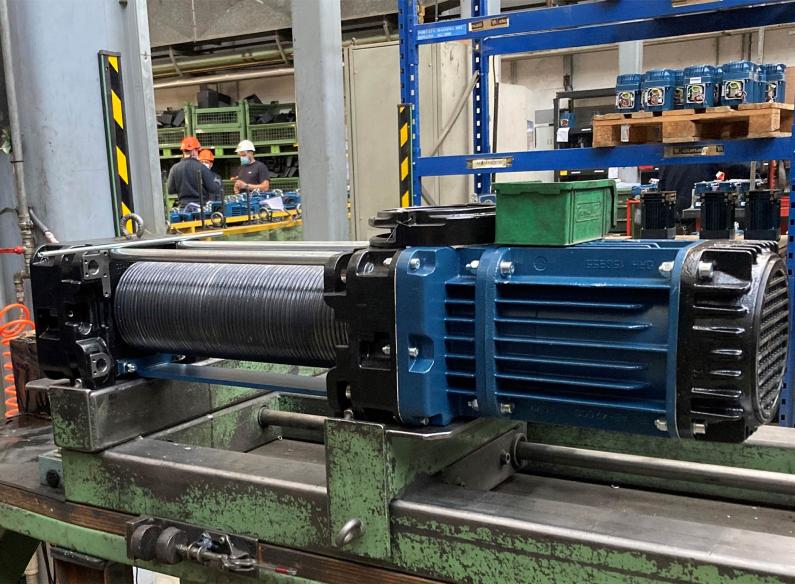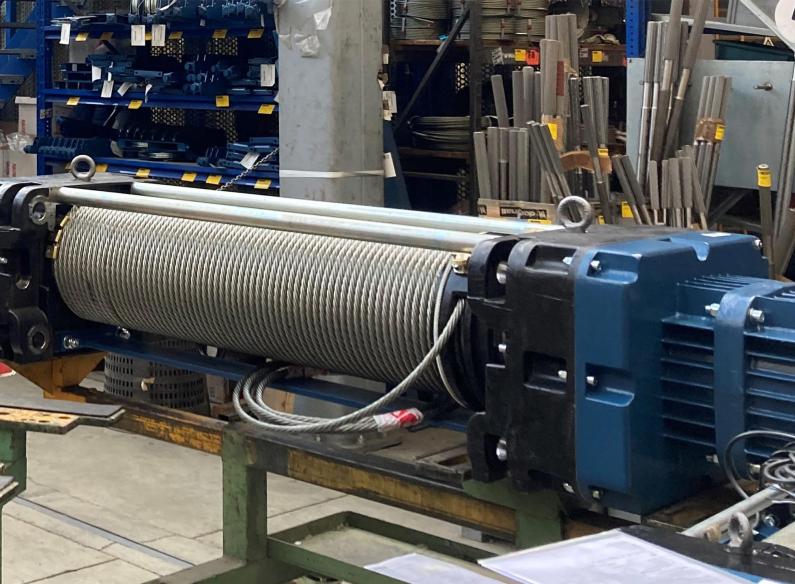How to choose the chains and ropes for electric hoists
Donati Sollevamenti S.r.l. offers consultancy and assistance in the choice of chain hoist or steel rope hoist that best meets the client’s needs.
The chains and ropes of the hoists are considered lifting accessories. Directive 2006/42/EC of the European Union defines them as a component or equipment not attached to the lifting machinery, allowing the load to be held, which is placed between the machinery and the load or on the load itself, or which it is intended to constitute an integral part of the load and which is independently placed on the market. Slings and their components are also regarded as lifting accessories.
Fundamental requirements of ropes and chains for hoists
Entrepreneurs, directors and craftsmen that have to purchase a hoist for their company or small business sometimes underestimate the differences between ropes and chains. In many cases, the importance of this accessory is considered insignificant compared to other components of the system. The consequences of this error of evaluation can be many but all expensive both from an economic and operating point of view.
The choice of rope or chain can be based on three fundamental requirements:
- the tensile strength. This value is expressed in kilogrammes (kg) or kilonewton (kN) and represents the minimum force that, applied along the main axis of the chain or rope, leads to its breakage;
- the work load. Also expressed in kg or kN, this represents the limit of force within which it is possible to operate in safe conditions;
- the safety or use factor. This is calculated based on the ratio between the tensile strength value and the work load value. The higher the factor, the greater the safety will be. Based on Italian Presidential Decree 459/96, the following minimum values are obligatory:
- 4 for chains
- 5 for steel ropes
After these requirements have been met, other factors have to be taken into consideration too, such as:
- the work environment and conditions, such as exposure of the lifting equipment to weather events, extremely low or high temperatures or chemical agents;
- the frequency and length of time the lifting equipment is used for;
- the costs, not only those for the purchase of the equipment, but also other costs such as for maintenance and repair.
Some indications about the most suitable lifting systems for these factors are given below.
Uses and advantages of steel rope hoists
Steel rope hoists are mainly used to lift weights of between 2 and 30 tons. They are therefore the best choice for industries that have to work with extremely heavy loads such as steel mills, foundries and companies that deal with large quantities of raw materials.
Ropes have the following advantages:
- high resistance to alterations caused by water, humidity and temperature changes. They are ideal for lifting operations outdoors, exposed to weather or sources of heat;
- suitable for intense and prolonged use, or to carry out a high number of operations over a long period of time;
- possibility of eliminating risks deriving from load rotation. Non-rotation wire ropes that reduce the torque along the axis are available. It is important to bear in mind that the rotation of the loads is a danger for the personnel due to both the unpredictability of this movement and to the possibility of destabilisation and fall of the load.
Rope hoists can be fitted with a grooved drum to guarantee correct winding. This operation must not be underestimated because irregular winding subjects the coils to tears and crushing that accelerate the wear of the ropes. The grooves ensure that the coils are arranged uniformly, tight and adherent.
Uses and advantages of chain hoists
Chain hoists are used for weights of between 125 and 4,000 kg. They are ideal for small companies, factories and workshops.
Chains have the following advantages:
- lower cost;
- greater simplicity of maintenance and use;
- simplicity of the shearing and extension operations with the addition of a new chain cross-section.

